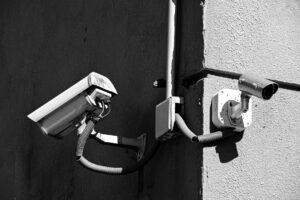5 Tips for Boosting Your Productivity at Work
Productivity is a crucial aspect of our daily lives. It allows us to accomplish tasks efficiently and effectively, leading to a sense of accomplishment and fulfillment. However, there are various factors that can affect our productivity, such as distractions, lack of organization, and unrealistic goals. In order to maximize our productivity, it is important to implement strategies and techniques that can help us stay focused and motivated. This article will explore different strategies to increase productivity in our daily lives.
Key Takeaways
- Prioritize tasks and create a to-do list to stay organized and focused.
- Minimize distractions and interruptions to increase productivity.
- Take regular breaks and practice self-care to avoid burnout.
- Use productivity tools and technology to streamline tasks and save time.
- Stay organized and maintain a clean workspace for a clear mind and better workflow.
Prioritize your tasks and create a to-do list
One of the most effective ways to increase productivity is by prioritizing tasks and creating a to-do list. By prioritizing tasks, you can focus on the most important and urgent tasks first, ensuring that they are completed in a timely manner. This helps prevent procrastination and allows you to allocate your time and energy efficiently.
To effectively prioritize tasks, it is important to consider deadlines, importance, and urgency. Start by identifying the tasks that have strict deadlines or are time-sensitive. Then, consider the importance of each task and how it aligns with your overall goals. Finally, evaluate the urgency of each task and determine which ones require immediate attention.
Once you have prioritized your tasks, create a to-do list to keep track of them. This can be done using a physical planner or a digital tool such as a task management app. Break down larger tasks into smaller, more manageable subtasks to make them less overwhelming. Be sure to review and update your to-do list regularly to stay organized and on track.
Minimize distractions and interruptions
Distractions and interruptions can significantly hinder productivity. They disrupt our focus and make it difficult to concentrate on the task at hand. In order to minimize distractions, it is important to identify the sources of distraction and take steps to eliminate or reduce them.
Common sources of distraction include social media, email notifications, noisy environments, and personal interruptions. To minimize distractions, consider implementing the following strategies:
– Turn off notifications: Disable notifications on your phone and computer to avoid being constantly interrupted by emails, messages, and social media updates. Designate specific times to check and respond to these notifications instead.
– Create a dedicated workspace: Set up a designated workspace that is free from distractions. This can be a separate room or a specific area in your home where you can focus on your tasks without being disturbed.
– Use noise-cancelling headphones: If you are working in a noisy environment, consider using noise-cancelling headphones to block out distractions and create a more focused atmosphere.
– Communicate boundaries: If you are working from home or in a shared space, communicate your boundaries to others. Let them know when you need uninterrupted time to work and ask for their cooperation in minimizing interruptions.
Take regular breaks and practice self-care
Taking regular breaks and practicing self-care is essential for maintaining productivity. It allows us to recharge our energy levels, reduce stress, and prevent burnout. When we neglect self-care and push ourselves too hard, our productivity and overall well-being suffer.
To effectively take breaks and practice self-care, consider the following tips:
– Schedule regular breaks: Incorporate short breaks into your daily routine. This can be as simple as taking a walk, stretching, or practicing deep breathing exercises. Use these breaks as an opportunity to relax and recharge.
– Prioritize sleep: Getting enough sleep is crucial for maintaining productivity. Aim for 7-9 hours of quality sleep each night to ensure that you are well-rested and ready to tackle the day ahead.
– Engage in activities you enjoy: Make time for activities that bring you joy and help you relax. This can include hobbies, spending time with loved ones, or engaging in physical exercise. Taking time for yourself will help you feel refreshed and rejuvenated.
– Practice mindfulness: Incorporate mindfulness techniques into your daily routine to reduce stress and increase focus. This can include meditation, deep breathing exercises, or simply taking a few moments to be present and aware of your surroundings.
Use productivity tools and technology to your advantage
In today’s digital age, there are numerous productivity tools and technology available that can help us stay organized and increase efficiency. These tools can automate tasks, streamline workflows, and provide valuable insights into our productivity habits.
Some popular productivity tools include project management software, task management apps, time tracking tools, and note-taking apps. These tools can help you stay organized, prioritize tasks, and track your progress. For example, project management software allows you to assign tasks, set deadlines, and collaborate with team members, while time tracking tools help you monitor how you are spending your time and identify areas for improvement.
It is important to find the right productivity tools that work for you and integrate them into your daily routine. Experiment with different tools and technologies to determine which ones align with your needs and preferences.
Stay organized and maintain a clean workspace

Staying organized and maintaining a clean workspace is essential for maximizing productivity. When our physical environment is cluttered and disorganized, it can be difficult to focus and find the resources we need. By keeping our workspace tidy and organized, we create a more conducive environment for productivity.
To effectively stay organized and maintain a clean workspace, consider the following tips:
– Declutter regularly: Take time to declutter your workspace on a regular basis. Get rid of any unnecessary items or paperwork that are taking up space. Keep only the essentials within reach.
– Create a filing system: Establish a filing system for important documents and papers. Use folders or binders to keep them organized and easily accessible when needed.
– Use storage solutions: Invest in storage solutions such as shelves, drawers, or bins to keep your workspace tidy. Assign specific areas for different items to make it easier to find what you need.
– Clean up at the end of each day: Before wrapping up your workday, take a few minutes to clean up your workspace. Put away any items that are out of place and organize your materials for the next day.
Set realistic goals and deadlines for yourself
Setting realistic goals and deadlines is crucial for maintaining productivity. When we set unrealistic expectations for ourselves, we are more likely to feel overwhelmed and discouraged. By setting achievable goals and deadlines, we can stay motivated and focused on our tasks.
To effectively set realistic goals and deadlines, consider the following tips:
– Break down larger goals into smaller milestones: Instead of setting one big goal, break it down into smaller, more manageable milestones. This allows you to track your progress and celebrate small victories along the way.
– Use the SMART goal framework: The SMART framework stands for Specific, Measurable, Achievable, Relevant, and Time-bound. When setting goals, ensure that they are specific, measurable, achievable within a certain timeframe, relevant to your overall objectives, and time-bound.
– Prioritize quality over quantity: Instead of focusing solely on the number of tasks you complete, prioritize the quality of your work. Set realistic expectations for what you can accomplish within a given timeframe and strive for excellence in each task.
– Be flexible with deadlines: While it is important to set deadlines for yourself, be flexible and allow room for unexpected delays or changes. Adjust your deadlines as needed to ensure that they are realistic and attainable.
Learn to delegate tasks and collaborate with others
Learning to delegate tasks and collaborate with others is essential for increasing productivity. Trying to do everything on your own can lead to burnout and inefficiency. By delegating tasks to others who are better suited or have more expertise in a particular area, you can free up your time and focus on higher-priority tasks.
To effectively delegate tasks and collaborate with others, consider the following tips:
– Identify your strengths and weaknesses: Determine which tasks you excel at and enjoy doing, and which ones you struggle with or find less fulfilling. Delegate tasks that fall within the latter category to others who are better suited for them.
– Communicate clearly: When delegating tasks, clearly communicate your expectations and provide any necessary instructions or resources. Ensure that the person you are delegating to understands what is expected of them and has the necessary support to complete the task.
– Foster a collaborative environment: Encourage open communication and collaboration within your team or workplace. Create opportunities for brainstorming, sharing ideas, and working together to solve problems. This can lead to increased productivity and innovation.
– Provide feedback and recognition: When collaborating with others, provide constructive feedback and recognize their contributions. This helps foster a positive work environment and motivates team members to continue performing at their best.
Focus on one task at a time and avoid multitasking
Contrary to popular belief, multitasking is not an effective way to increase productivity. In fact, it can actually decrease productivity and lead to errors or incomplete tasks. When we try to juggle multiple tasks at once, our attention becomes divided, making it difficult to focus and complete each task efficiently.
To effectively focus on one task at a time and avoid multitasking, consider the following strategies:
– Prioritize tasks: As mentioned earlier, prioritize your tasks based on importance and urgency. Focus on one task at a time, starting with the most important or urgent one. Once that task is completed, move on to the next one.
– Set dedicated time blocks: Allocate specific time blocks for each task on your to-do list. During these dedicated time blocks, focus solely on that task without any distractions or interruptions. This allows you to give your full attention to each task and complete it more efficiently.
– Practice mindfulness: Incorporate mindfulness techniques into your work routine to improve focus and concentration. Practice deep breathing exercises or meditation before starting a task to clear your mind and increase mental clarity.
– Minimize distractions: As discussed earlier, minimize distractions by turning off notifications, creating a dedicated workspace, and using noise-cancelling headphones. By eliminating distractions, you can create a more focused environment that promotes productivity.
Stay motivated and maintain a positive attitude
Staying motivated and maintaining a positive attitude is crucial for maintaining productivity in the long run. When we are motivated and have a positive mindset, we are more likely to approach tasks with enthusiasm and determination. This leads to increased productivity and a higher quality of work.
To effectively stay motivated and maintain a positive attitude, consider the following tips:
– Set meaningful goals: Set goals that align with your values and aspirations. When you have a clear sense of purpose, it is easier to stay motivated and focused on your tasks.
– Celebrate small victories: Acknowledge and celebrate your achievements along the way. This helps boost motivation and provides a sense of accomplishment.
– Surround yourself with positivity: Surround yourself with positive influences, whether it be supportive colleagues, inspiring mentors, or motivational books and podcasts. Avoid negative environments or individuals that drain your energy and motivation.
– Practice self-care: As mentioned earlier, prioritize self-care activities that bring you joy and help you relax. Taking care of your physical, mental, and emotional well-being is essential for maintaining motivation and a positive attitude.
Evaluate your progress and adjust your strategies accordingly
Evaluating your progress and adjusting your strategies is essential for continuous improvement. It allows you to identify what is working well and what needs to be adjusted in order to increase productivity. By regularly assessing your progress, you can make informed decisions about how to optimize your workflow.
To effectively evaluate your progress and adjust your strategies, consider the following tips:
– Reflect on your achievements and challenges: Take time to reflect on your accomplishments and challenges. Identify what went well and what could be improved upon. Use this information to inform your future strategies.
– Seek feedback from others: Ask for feedback from colleagues, mentors, or supervisors. They may provide valuable insights and suggestions for improvement that you may not have considered.
– Analyze your productivity data: If you are using productivity tools or technology, analyze the data they provide. Look for patterns or trends that can help you identify areas for improvement. For example, if you notice that you are spending a significant amount of time on non-essential tasks, consider ways to streamline or delegate those tasks.
– Be open to change: Be open-minded and willing to adapt your strategies as needed. What works for one person may not work for another, so be flexible and willing to experiment with different approaches.
Increasing productivity in our daily lives is essential for achieving our goals and maintaining a sense of accomplishment. By implementing the strategies discussed in this article, such as prioritizing tasks, minimizing distractions, taking regular breaks, using productivity tools, staying organized, setting realistic goals, delegating tasks, focusing on one task at a time, staying motivated, and evaluating progress, we can optimize our productivity and achieve success in all areas of our lives. Remember to be patient with yourself and allow room for growth and improvement. With dedication and consistency, you can increase your productivity and accomplish more than you ever thought possible.
If you’re interested in exploring more about the topic of 5 inches, you might find this article from Gent Books intriguing. Titled “Hello World,” it delves into the fascinating world of measurements and their significance in various fields. From the length of a smartphone screen to the height of a plant, this article sheds light on the importance of 5 inches in our everyday lives. To read more about it, click here.
FAQs
What is the article “5 inches” about?
The article “5 inches” does not provide enough context to determine its topic.
What does the term “5 inches” refer to?
The term “5 inches” refers to a measurement of length or distance, specifically 5 inches or approximately 12.7 centimeters.
What are some common objects that are approximately 5 inches in length?
Some common objects that are approximately 5 inches in length include smartphones, pocket knives, and some types of pencils.
How can I convert 5 inches to other units of measurement?
To convert 5 inches to centimeters, multiply by 2.54. To convert to millimeters, multiply by 25.4. To convert to feet, divide by 12. To convert to meters, divide by 39.37.
Is 5 inches a common size for anything?
Yes, 5 inches is a common size for many objects, including smartphones, pocket knives, and some types of pencils. It may also be a common size for certain types of screws or bolts.



